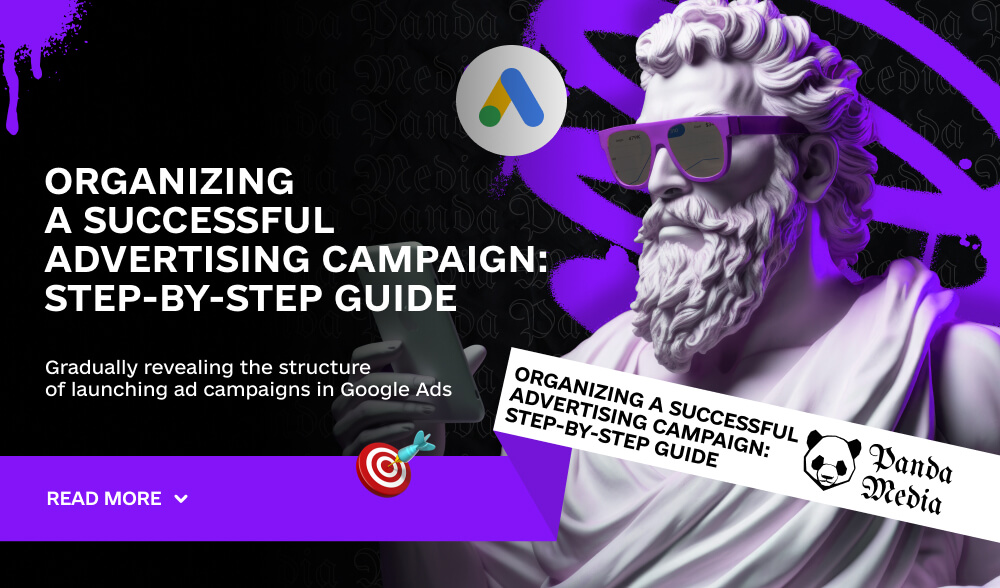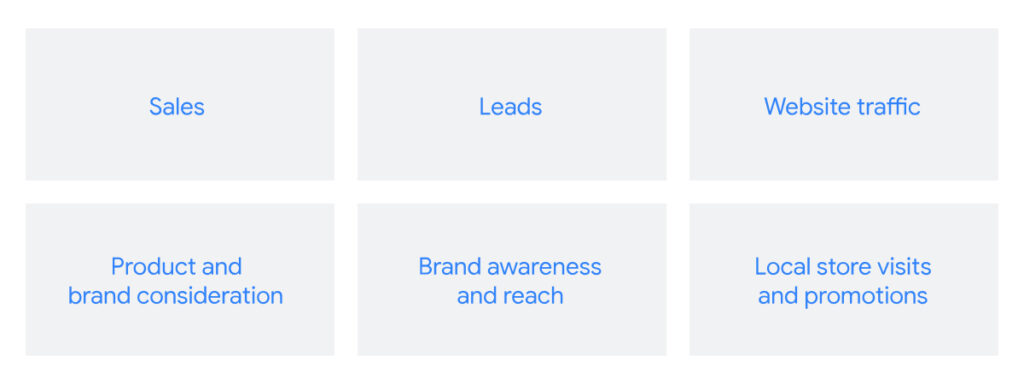Don't miss interesting news

A successful advertising campaign starts with clear planning and a strategic approach. Let’s take a look at the main stages of creating an ad campaign, from setting goals to tracking conversions, to maximize your advertising efforts and achieve high performance.
Launching an advertising campaign starts with setting a goal. It sets the expected result of the ad launch. The chosen goal will affect the settings of your campaign. For example, if your goal is to attract more visitors to your website, it is advisable to choose the Maximum Clicks bidding strategy to increase the likelihood of your ad being clicked. The Maximum Efficiency campaign type is available only if you select the Sales, Leads, or Store Visits and Promotions goals.

When you define the goal, a list of proposed campaign types will appear. Their type will determine where and how your ads will be displayed.
The highest-performing campaigns that use Google’s artificial intelligence deliver the best results. They adapt to changes in consumer behavior in real time and help you find customers who are ready to convert across all Google services: YouTube, Display Network, Search, and Recommendations.
For example, Video and Demand Generation campaigns allow you to run video ads on YouTube, and Display Network campaigns allow you to run graphical ads on various websites and apps.
Your ad spend and bids in automated ad auctions will depend on the average daily budget you set. You can change this value at any time.
When setting up an ad campaign, selecting a goal will suggest a suitable bidding strategy (for example, conversion optimization).
This will ensure that you achieve the desired results. For some campaigns, you can choose automatic strategies (for example, Target Cost Per Conversion or Target ROI) instead of the bidding method.
If there is no suitable bidding strategy among the available options, you may need to change the goal or campaign type.
In campaigns such as Search Network, Video, Demand Generation, and Maximize Performance, you can add additional information to your ads, such as website links, directions, or phone numbers.
This increases the likelihood that a potential customer will choose your company. In general, elements increase the CTR of advertising by several percent.
For most campaigns, with the exception of shopping and those focused on maximum efficiency, you can combine similar ads into single groups by setting up targeting at the level of these groups. For example, you can create a group of ads promoting evening shoes and target them to users who are interested in this product category.
Product groups with the same targeting parameters are used in shopping campaigns.
Advertising personalization makes it possible to accurately determine the target audience. Without this setting, ads will be shown to a wide range of users. However, with targeting, ads will be shown only to those who are really interested in your products or services.
Targeting can be based on keywords, interests, geographic location, topics, and device types, and can include remarketing. The options available depend on the type of campaign. For example, in a maximized performance campaign, you can’t choose to show ads only to certain groups, such as women aged 18 to 24 or users from remarketing lists. Instead, you can use these parameters as signals for Google’s algorithms, which speeds up the process of artificial intelligence learning.
Conversion monitoring allows you to collect data on key actions of visitors on your website. This helps to more accurately assess the effectiveness of your ads, target audience settings, and marketing activities in general.
For some campaigns, enabling conversion tracking is a must.
Creating and launching an advertising campaign is a process that involves detailed planning. Defining a marketing goal is the first step that sets the direction for the entire process. Choosing the right type of advertising, setting up a budget, bidding strategy, targeting, and monitoring conversions are all part of an effective advertising strategy. By following our proven recommendations, you will be able to maximize the capabilities of modern advertising tools and achieve the desired results. And your launch will be doomed to success!